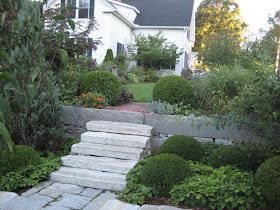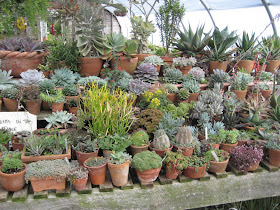
If a woman enters a room wearing my grandmother's perfume, a quarter of a century after her death, it immediately brings me back to her. Olfaction, the sense of smell, is closely aligned with memory. Proust wrote, "When nothing else subsists from the past, after the people are dead, after the things are broken and scattered, the smell and taste of things remain poised a long time, like souls, bearing resiliently, on tiny and almost impalpable drops of their essence, the immense edifice of memory."
The heady scent of Gladiolus callianthus 'Murielae' transforms me in time to the late Elsa Bakalar's lovely garden in Heath, Massachusetts. For that was the first time I had encountered the the warm intoxicating fragrance of this so-called Abbissian gladiolus. On a warm July evening, a moment before dusk, a waft of an exotic aroma passed through the garden and I immediately needed to find the source. Elsa pointed out the elegantly arching stems of white flowers with long throats tinted in burgundy. Gladiolus callianthus 'Murielae' is zone 6 corm that needs to be harvested each fall and stored as one would a dahlia in the basement in New Hampshire. It flowers for about 3 weeks in my garden. The spent flowers are easily dead-headed; simply give the wilted flower a gentle tug and it slides right into your hand.
Elsa was born in England and taught grade school and then high school in New York City. In 1984, she and her husband, Mike, moved to Massachusetts where she built a flower garden. After retiring from teaching, she began to lecture about gardening for the Arnold Arboretum and the NYBG. Her 1994 book, A Garden of One's Own: Making and Keeping Your Flower Garden, is a personal favorite. Elsa died, at the age of 91, in January 2010. Horticulture has an article about Elsa and her garden in the current issue. The present owners have kept the garden intact with the help of Jeff Farell, Elsa's friend who helped her in her garden for many years.





































